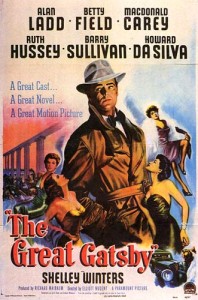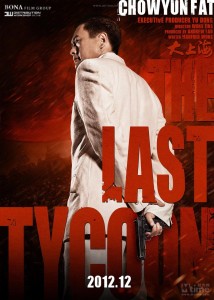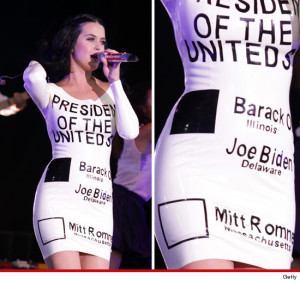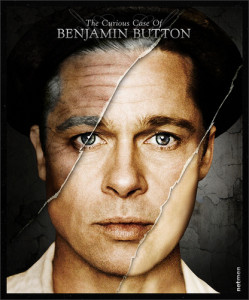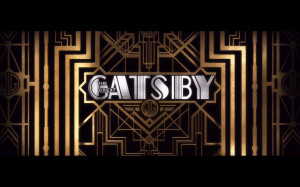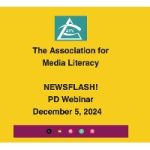Lesson Plan: The American Dream
The American Dream & Media Messages (ENG3U)
by Diana Luciani, former AML Board Member
In teaching F. Scott Fitzgerald’s The Great Gatsby as literature, media literacy might help students in their understanding of the literary work’s concept of the American Dream. Students will explore the American Dream through an investigation of media messages. The media literacy component of this Great Gatsby unit—exploring media messages depicting the American Dream—is studied as a sidebar/in conjunction with the study of the work as literature in order to integrate media study into the curriculum.
Since film and advertising are very powerful media tools, particularly for the messages they convey and the pervasive influence they have on students’ lives, they’ve been chosen for media exploration to help engage students in their learning of the literary work and one of its core themes.
Materials:
• Advertisements incorporating the American Dream
• Film adaptations of The Great Gatsby, including The Last Tycoon and/or The Curious Case of Benjamin Button
• AML Media Studies Triangle (use as a handout)
• AML Eight Key Concepts of Media Literacy (use as a handout)
• AML Media frameworks – Codes and Conventions (use as a handout)
• Compare/Contrast handouts (use for ads, films vs. literary work)
Key Concepts of Media Literacy addressed in this activity:
- Media represent versions of reality.
- Audiences use past experiences and skills to negotiate meanings in media texts.
- Media texts communicate values messages.
- Media texts communicate political and social messages.
- Media texts’ form and content combine to communicate meaning.
- Each medium has a unique aesthetic that helps determine what is effective and pleasing.
Ontario Curriculum Expectations:
- Students will: focus on the art, meaning and messaging of various forms of media texts, particularly on the construction of meaning through the combination of several media languages: images, sounds, graphics and words.
- Explore the impact and influence of mass media and popular culture by examining texts such as films, songs, advertisements, etc.
- Understand how media texts are constructed and why they are produced.
- Develop communication skills, including the ability to critically interpret the messages they receive through the various media, and to use these media to communicate their own ideas effectively.
- View, analyse and discuss a variety of media texts and relate them to their own experience.
- Understand, create and critically interpret media texts.
- Examine how images, sound and words are used, independently and in combination, to create meaning.
- Explore the use and significance of particular conventions and techniques in the media, and consider the roles of the viewer and producer in constructing meaning in media texts.
- Apply the knowledge and skills gained through analysis of media texts as they create their own texts.
- Explain how media texts are created to suit particular purposes and audiences.
- Interpret media texts, identifying and explaining the overt and implied messages they convey.
- Evaluate how effectively information, ideas, themes, issues and opinions are communicated in media texts, and decide whether the texts achieve their intended purpose.
- Explain why the same media text might prompt different responses from different audiences.
- Identify the perspectives and/or biases evident in media texts, and comment on any questions they may raise about beliefs, values, identity and power.

- Identify general and specific characteristics of a variety of media forms and explain how they shape content and create meaning.
- Identify conventions and/or techniques used in a variety of media forms and explain how they convey meaning and influence their audience.
- Describe the topic, purpose and audience for the media texts they plan to create.
- Identify a variety of conventions and/or techniques appropriate to a media form they plan to use, and explain how these will help communicate a specific aspect of their intended meaning effectively.
- Produce media texts for a variety of purposes and audiences, using appropriate forms, conventions and techniques.
- Explain which of a variety of strategies they found most useful in interpreting and creating media texts, and then evaluate their strengths and weaknesses as media interpreters and producers to help identify the steps they can take to improve their skills.
- Explain how their skills in listening, speaking, reading and writing help them interpret and produce media texts.
Timeline: 6 lessons
Before: (Day 1)
To activate prior form and content knowledge, students’ study of The Great Gatsby as literature will have already begun. Prior to introducing media exploration, the class will brainstorm and record their ideas of what constitutes the American Dream. How does this notion apply to the novel The Great Gatsby? A discussion will follow. Discuss their ongoing in-class assignment of applying media analyses – using class discussion and handouts (media studies triangle, key concepts, and media frameworks codes and conventions) and applying them to the media texts shown in class.
During: (Days 2-4)
To build on student awareness and analysis, students will view various advertisements incorporating the American Dream and will analyze them, including the ads and rhetoric of US President Barack Obama (use those from his first campaign leading to his presidency, and compare those to his second ads in seeking re-election).
Film adaptations of The Great Gatsby, including The Last Tycoon and/or The Curious Case of Benjamin Button (an adaptation of a Fitzgerald short story), will also be analyzed for their connections to the themes and characterizations of the novel.
Give students a compare/contrast handout –to be used throughout this unit – so that they can document their findings of how these media texts and their messages connect with the American Dream theme in The Great Gatsby.
Students will assess how each media form changes the message as they compare/contrast the film versus the previous day’s advertisements, and ongoing reading of their novel.
Class sharing/participation will be documented.
A brief review of the advertisements and film and their messages’ connections to the literary text and the American Dream will occur.
Students will be asked to write a brief reflection on their findings, and submit the reflection with their compare/contrast handout. These will be collected and reviewed to ensure students’ media literacy proficiency, and then returned the next day.
After: (Days 5-6)
To bring students’ learning into action, students will receive a culminating assignment for the media component of The Great Gatsby unit: to create a present-day movie poster for The Great Gatsby, casting present-day actors.
A media deconstruction of a movie poster, including form and messages conveyed, could be done as a class to get students prepared for their assignment. This can be done as a group project.
Students should receive at least one full in-class work period to create the movie poster. In addition to evaluating the creative component of the assignment, students will also reflect on the connection of their chosen actors’ traits to the original characters in the literature, and include a rationale for their choices of actors.
They will also include a media literacy analysis of their own posters, including the messages they convey, and provide a rationale for their creative choices. (*Students can also create a movie trailer, at the teacher’s discretion, but this will require more of a time commitment).
Teachers will evaluate the movie posters and reflections, as well as the students’ presentations, while continuing to teach The Great Gatsby as a literary work.
Media reflection with Movie Poster: (provide this for students’ deconstruction)
Write a brief reflection based on how your group integrated media – using critical media literacy and production for your assignment – to make the choices you made for your Great Gatsby Movie Assignment. Use the American Dream/Media Triangle and Key Concepts handout to assist you. Your group is expected to address this media component during your presentation of the movie assignment. Use some of these questions as a guide to your group’s written and oral reflection:
• Deconstruct your film advertisement/promotion using the media triangle &/or key concepts. Why did you choose the actors you did to play the various Gatsby roles?
• Why did you make the choices you made for the poster to help “sell” your film?
• Similarly, how does your theme song choice “sell” your film?
• How does your radio ad “sell” your film? Why did you make the choices you made? What meanings and messages, beliefs and values, does your overall campaign convey about your film?
• How did you apply what you learned about media and the American Dream in class to creating your own media texts?
• Which strategy did you find most useful in interpreting and creating your media texts? Evaluate your strength and weaknesses as media interpreters and producers.
• How did you use images, sounds, graphics and words (media languages) to help you construct meaning?
• How did media help you to effectively communicate your ideas?
• How did your analysis of other media texts (examples in class, original Gatsby film) help you to create your own media text?
• What is the purpose and intended audience for your media text?
• What are the overt and implied messages?
• How do you expect the audience to respond to your media text?
• What strengths and/or weaknesses did you notice when producing this media text?
(This lesson plan is applicable to the Secondary classroom. – ed.)



